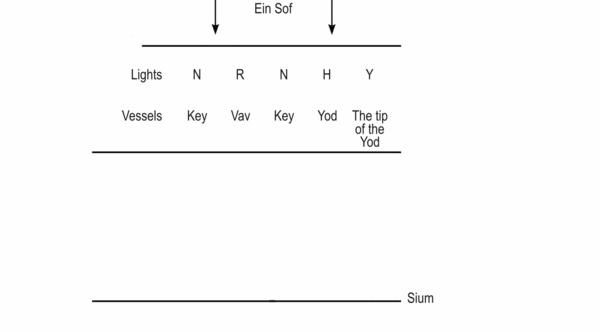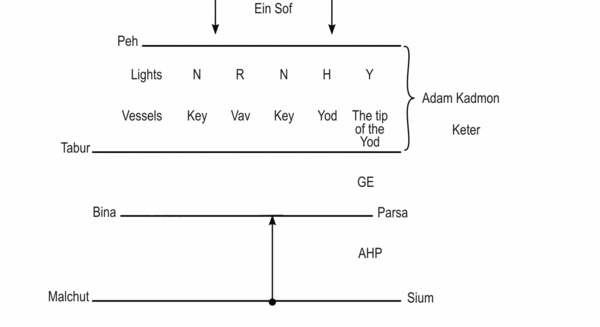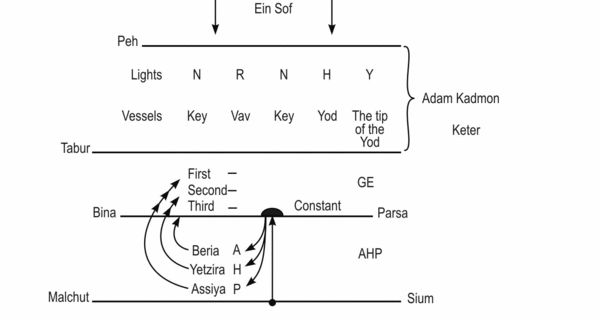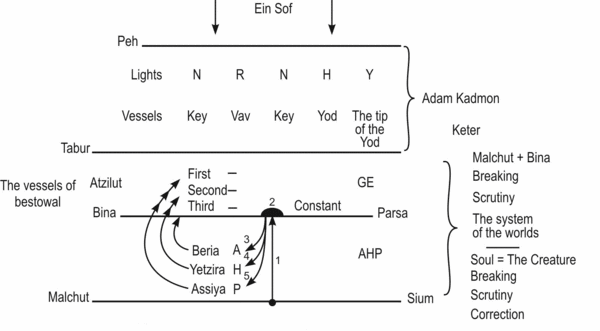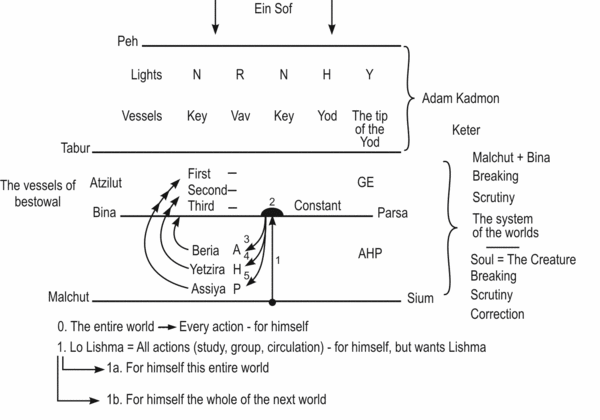Article "Atzilut in BYA"
-
Bold and in quotes: Original text of Baal HaSulam
-
Regular: Commentaries of Rav Laitman
-
lowercase italics: emphasized words
-
Capitalized italics: transliteration from Hebrew
We are reading in the book Shamati, Article #79: Atzilut in BYA.
Atzilut is considered from the Chazeh up, which is only vessels of bestowal. BYA means reception in order to bestow, the ascent of the lower Hey to the place of Bina.
Because man is immersed in the will to receive in order to receive, one cannot do a thing without having reception for oneself in there. For this reason our sages said, “from Lo Lishma one comes to Lishma.” This means that we begin the engagement in Torah and Mitzvot in order to “give us the wealth of this world,” and afterwards, “give us the wealth of the next world.”
And when studying this way, one should achieve studying Lishma, for the Torah. This means that the Torah will teach him the ways of the Creator. And he should first make the sweetening of Malchut in Bina, which means that he elevates Malchut, called “will to receive,” to Bina, which is considered bestowal. That is, that all of one’s work will be only in order to bestow.
And then it becomes dark for him. He senses that the world has grown dark on him, since the body gives strength to work only in the form of reception, and not in the form of bestowal. In that state, one has but one counsel: to pray to the Creator to open his eyes so he can work in the form of bestowal.
And this is the meaning of “who stands for the question?” It refers to Bina, called Mi (water) and the question comes from the verse, “asking about the rains,” meaning prayer. Since they arrive at the state of “water of Bina,” there is room to pray for it.
We learn that the Light is the Creator that created the will to receive, the creature, so that only the will to receive can attain the Light as good and loving. The Creator's or the Light’s only desire is for the creature to attain Him in this way. This is why He created in the creature a desire to feel the Creator’s attitude toward him.
Therefore the whole creature is only a will to receive, specifically a desire to feel pleasure. The Creator wants the creature to feel pleasure from Him because from the side of Creator there is no other attitude than pleasure toward the creature. But, in order for the creature to feel that pleasure without any obstructions from its own desire, to feel it, not the way that the creature is capable of feeling, but rather in the way it really comes from the Creator toward the creature, the creature has to go through corrections called “in order to bestow.” This is actually to transcend its own nature, so as to feel the Creator’s attitude toward it, how he himself is without any obstructions with respect to the will to receive.
Just imagine, one man loving another and the other is willing (which is how he is built), to receive this attitude of the friend. Children do too, with respect to the parents. Children cannot feel the parent’s love except according to the ego within them. We feel this in the small child whose only desire is to exploit the parents for his benefit. This is how he understands that the parents love him, and he doesn’t understand any other way.
How is it possible to explain to a child, or even to an adult, that the parents love him much more than he feels in his vessels when he wants to exploit them for him self? He has to transcend above his Kelim (vessels) completely, become independent of them, so as to enter the parents' hearts and feel their love the way they actually feel the love to him. He has to be detached from himself and feel the love as it is in them, as it burns in them toward him. This is the state that the Creator wants to bring the creature to, and the creature has to experience it. So the whole process of corrections, called the ascent above the ego and acquiring the quality of bestowal, is actually what we learn in the wisdom of Kabbalah.
The correction experienced by the creature happens gradually. From the Creator, there is the preparation within the creature to enable him to experience these corrections. It’s called hanging down of the worlds, Partzufim and Sefirot, from above downward through the restrictions and the breaking. Thereby, the system is built, so that when the creature comes to this world it will have the ability, through this system and with its own free choice, to come to know the Creator’s love for it.
And here we should speak of the creature’s own work. The Creator has not created the system which works on that will to receive of the creature and brings it to the goal without asking, without relating to the creature as something that is independent, outside of the Creator. Rather, that this will to receive is to feel, not itself and how to exploit the Giver, but so it would feel the Giver’s attitude toward it without exploiting Him with its ego, and then, there must be here the work of the creature. Because the child wants, let us say, to get rid of its ego on his own; to know, not in the spoiled form of his ego, but in the true form of the parents' love for it.
Therefore this is where we have to work with free choice, where a person chooses his evolutionary process above the will to receive, so as to feel that absolute love. That’s why it says that this world and creation in general, was created only for free choice.
It is understood that this choice is intended only for people who acquire screens above their egoistic nature, who are willing to come out of themselves so as to feel, in this new vessel, the true attitude of the Creator toward them; they’re called the Kabbalists. They are those who receive the Creator’s attitude toward them as it is, on the one hand, and on the other, as creatures, feel the Creator’s attitude toward them.
This means that there are two contradicting things here. On the one hand, they feel within themselves the Creator’s attitude toward them. On the other, they feel the Creator’s attitude toward them without any obstruction from their own Kli (vessel), which is something unrealistic. How is it possible that in the Kli of the creature there’ll be a phenomenon sensed without the obstruction of the Kli of the creature itself? How can that be?
In all the measurements or our sensations in this world, we have the person who feels, and what he feels within himself, which is all dependent only upon him. The world is the same world, yet one person feels good in it, while another one feels bad. I myself, even, might feel good one moment, and in another I may feel bad. It all depends on my own Kelim. But here, we’re talking about having a creature and that it feels within its Kelim. However, its Kelim are independent of the state of the creature itself. Rather it feels how this attitude of the Creator toward him exists as outside of it. This correction of the creature is called “equivalence of form.”
It’s not merely feeling the Creator’s attitude toward him but understanding Him, experiencing Him, living in the same state as the Creator. It means the correction that the creature experiences changes the creature from the creature’s degree to the Creator’s degree. That’s how he becomes inside, in his own will to receive. We say that it becomes clothing within the Kli, the Ohr Hozer (Returning Light), and the intention within the Kli. This intention isn’t just any intention; this intention is the Creator’s quality, the Creator’s attitude, it is the Creator that is clothed within the created, this is the intention of OhrHozer.
The matter of the worlds is that the creature gradually acquires a correction of its will to receive, on top of its will to receive; he can’t do it any other way. Within this desire it builds the forms of the Creator, and in them it feels and attains according to its ability to build, and does so by itself brick after brick, phase by phase. In this way it builds and then understands exactly the full depth of the Creator’s attitude toward him and all of its five phases from MalchutBehina Dalet, Gimel, Bet, Aleph up to Shoresh (phase four, three, two, one up to the root.) It’s called ten Sefirot of the Returning Light by which Malchut returns to be Keter.
This happens through a correction called the second restriction. The first restriction Malchut should make is to acquire the quality of bestowal. The quality of bestowal in the system of the worlds, which are to correct the creature, is expressed in the Sefira of Bina or in Partzuf SAG. It is that which presents to Malchut the quality of Bina, connects to Malchut and begins to work with Malchut on correcting Malchut; as it is written, “And they both went together.” It turns out that the whole reality is divided into two parts for us.
We have the world Ein Sof (Infinity), which is the Creator’s attitude toward the creature in the way it is from the Creator's perspective, without the disturbances from the creature. With respect to the creature, consisting of five parts—the tip of the Yod, the Yod, Hey, Vav and Hey, which is divided into NRNHY (Nefesh, Ruach, Neshama, Haya and Yechida)—the vessels and Lights.
Then the world of Ein Sof, which is divided and arranged in its fullest power in these Kelim, is called the world of Adam Kadmon. It means that the world Adam Kadmon is basically that same world of Ein Sof. That’s why it’s called the world of Keter, which is, however, divided or scrutinized more with respect to the future creature, according to the desires and screens that will be in the creature.
Then we have the substance of the creature itself and how it should be corrected. It is divided into Galgalta ve Eynaim (GE) according to the system that operates on it and AHP. Parsa is actually the quality of Bina; Sium (the end) which is the quality of Malchut, and the whole process happens between Bina and Malchut. The creature first corrects itself by acquiring the quality of Bina. This is called that from this world, having acquired GE, it must transcend Parsa de Atzilut.
When the creature acquires the quality of GE, then it comes down to the AHP ( Auzen, Hotem and the Peh) to Beria, Yetzira and Assiya. Accordingly, it corrects the Kelim, which we called the first ascent, the second or the third ascent. And Parsa de Atzilut is a constant state.
So these are the corrections. Namely, first there is the ascent is to the world Atzilut. When we are in the world Atzilut we then come down to the AHP and begin correcting the AHP. In the form of AHPde Aliyah we correct the vessels of reception.
These vessels of bestowal of the world Atzilut are actually intended only to correct the AHP and there’s no other need in them. They don’t exist for themselves, but only to correct the AHP. That’s why all of these worlds, the ABYA (Atzilut, Beria, Yetzira, and Assiya) were corrected after Malchut and Bina joined together, later they broke, then they scrutinized the Kelim that could be made of them, the vessels of the worlds and only then do we have the soul, which is actually the creature. It too, then, goes through breaking, scrutiny and correction. These are the processes that the whole system of reality goes through.
Atzilut and BYA: Atzilut is considered from the Chazeh up, which is only vessels of bestowal. BYA means reception in order to bestow.
What does this mean? We’re talking about the creature. Atzilut is the vessels of bestowal and BYA is reception in order to bestow. Where is the reception in order to bestow in BYA? It doesn’t exist in BYA, rather these are Kelim, which when the creature uses them, uses them as AHP of ascent. That’s why these Kelim of BYA are Kelim in which the creature receives in order to bestow.
…the ascent of the lower Hey to the place of Bina.
Because man is immersed in the will to receive in order to receive, one cannot do a thing without having reception for oneself in there.
That’s the state that we are in below the Sium, where every act is for ourselves. It can’t be any other way.
For this reason our sages said, “from Lo Lishma one comes to Lishma.”
What does it mean? We do all kinds of actions when we want to correct ourselves. The actions are: the study, the group, and dissemination. Of course, one does it for yourself for the time being, but somehow he begins to understand or hear that you want Lishma. Then all actions here described are called Lo Lishma.
There are people whose actions are only for themselves, consciously or unconsciously, it doesn’t matter. Such people constitute the entire world. And there are some people who see and know and admit that their actions are for themselves, but somehow have a desire to transcend that, and perhaps come out of it to some degree. They have what is called a preparation for Lishma. That’s why Baal HaSulam says: there is the “state zero,” the state of the entire world, and there is the first state from which we come to Lishma. As it is said that: “Out of Lo Lishma we come to Lishma.”
This means that we begin the engagement in Torah and Mitzvot…
'Torah and Mitzvot ' are all the actions and all the corrections that a person tries to do on himself to be awarded Lishma. Through the Light that Reforms, called Torah, he acquires both the wealth of this world and then the wealth of the next world. He discovers, a) that he wants, through this engagement this entire world for himself, and then discovers b) that he also wants for himself all of the next world, as it seems to him, and as he understands it. In learning this way he must come to the study Lishma.
How can that be? It is because he discovers within himself all of the Aviut (coarseness) that he will have to correct later on. As we have learned, first he discovers the darkness and the concealments, which previously he didn’t even think that he was in concealment and darkness. They appear in him as in the form of mistakes where he sometimes feels that he is a little corrupted here and there, well, like everyone else.
Later on he discovers not only these small obstructions that he is a little corrupted, with respect to those who are in this world. He begins to discover his corrupted desires as greater desires and also begins to see them with respect to the Creator. This is also called “wanting the whole of the next world for himself.” It means he wants to exploit the Creator for himself so the Creator will serve him. Just like a little child who is ruthlessly demanding, and wants the parents to serve it.
When he studies the Torahcorrectly and performs the Mitzvot correctly, namely all the actions that can bring him to correction, then it is precisely in all those states he goes through, he should arrive at the study Lishma.This is the wonder .
The more he learns, the more he draws the Light. On one hand the Light that Reforms shows a person the depth of his ego with intentions only for himself.
There is a desire to enjoy and a desire to enjoy for oneself. These are two things. The desire to enjoy is just a desire that was created. “For oneself” is the intention to receive at the expense of someone else; by doing something which feels bad to someone else, yet with respect to himself he will feel good.
This stems from the breaking of the system of Adam ha Rishon (the First Man). All the good that we can have egoistically is from exploiting the rest of the system, the rest of the souls for our own good; that’s the only way the ego can work. We don’t consider it ego when a person simply wants to enjoy. Rather it is ego when a person understands that he is in a system of souls and wants them to feel bad while he feels good at their expense. This is what he feels, in a relational way that he’s exploiting them and they’re all working to benefit him, to serve him. When he works in such a way as to reach that goal, then he discovers all of his desires, and they bring him precisely to the recognition and the hatred of evil.
He then begins to have the real MAN, the real prayer to be corrected by the Light, from besides being shown the evil in him to actually correcting the evil that it showed. He then has the chance to reach Lishma, meaning, “For the Torah.” Just as the Light comes to a person to uncover the evil so does now the “Name ( Lishma) of the Light” that corrects, brings the correction. The Torah is that which shows a person the way, and not just his state, but how to reach, via the Torah, the teacher, who appears within the Torah. It means that the Torah will teach him the ways of the Creator and then he should make first a sweetening of Malchut in Bina.
If he discovers how opposite he is from the Light, to that extent, having discovered this, namely already touching upon the Behina Dalet (Phase Four) in him which is the depth of the desire with the intention, now to that extent he discovers the necessity to exit that evil that he discovered. Then he needs the Light that Reforms to make the correction in him, so as to have in him the qualities of Bina. This is called “sweetening.” When the will to receive takes upon it the qualities of Bina, i.e., the intentions of bestowal, it is called “being sweetened.” It means that it raises Malchut, called the will to receive, to Bina, which is the aspect of bestowal.
This means that it wants all of its desires to be at the level of Bina; that the will to receive will not speak in him but only the will to bestow will be speaking in him, and he would feel only that. He still doesn’t understand how that can happen but he wants the quality of bestowal to control him. He still doesn’t think about how to correct all his nature, so as to receive in order to bestow, but simply wants to be like the Bestower. This is called raising his Malchut to Bina. And then it becomes dark for him. Why? It's because his vessels of reception don’t receive anything from that. It is by picturing how to be only as the bestower that the Kelim, the vessels of reception, feel darkness; this is called “becoming dark” for him.
The pleasure of reception immediately vanishes out of his Kelim and the darkness in them is immediately discovered, where there is no pleasure. So, what does he do?
And then it becomes dark for him. He senses that the world has grown dark on him, since the body gives strength to work only in the form of reception...
Now here, then, he feels something else. There’s discernment beyond the darkness. From within the darkness, where he suffers from not having something to enjoy, he begins to discover, in drawing more on the Light that Reforms by persistence in the work, in the study, in the group and dissemination, he goes on to discover in this darkness, that this darkness is felt precisely in the vessels of bestowal. But how it is possible to feel within these vessels, to have a sweetening and then out of that darkness to feel Light?
How does one feel satisfaction from the quality of bestowal itself so that it will be like the Light, to enjoy not from receiving but from wanting to bestow? He still doesn’t have anything to bestow with, but he already wants to bestow. In wanting to bestow it will be for him as Light because in that he would be similar to the Creator. It is not by getting rid of the shame, which is an egoistic sensation, a sensation of pain, but rather, by being similar to the Creator. This is what he considers Light.
He senses that the world has grown dark on him, since the body gives strength to work only in the form of reception, and not in the form of bestowal. In that state, one has but one counsel: to pray to the Creator to open his eyes so he can work in the form of bestowal.
He’s not praying for the Light to have the pleasure, but even if the darkness continues he will be in the quality of bestowal and will be satisfied with it, even if the quality of reception may not provide any fulfillment.
It means that he’s not asking for satisfaction which will come with the quality of bestowal. Rather, being in the quality of bestowal that is already the satisfaction in itself. It means that he’s not asking for pleasure to enjoy and the correction to reach pleasure, but he’s asking for the ability to be in corrections, and that being in corrections will be as pleasure for him. It is not that the vessels of reception will have enjoyment from that state, rather the vessels of bestowal, from being in bestowal, from his acquiring these Kelim, from that he has satisfaction. Namely the pleasure is detached from the self sensation.
In that state, one has but one counsel: to pray to the Creator to open his eyes so he can work in the form of bestowal.
And this is the meaning of “who stands for the question?” It refers to Bina, called Mi (water) [Itarises from that question that he asks about: it and asks for it.] and the question comes from the verse, “asking about the rains,” [i.e., asking forcorrection.”]
When he asks for the rain to come, the soil will produce. How? Malchut, being the soil, connects to Bina,which is the rainwater, and then the soil can yield fruit. He’s already asking for corrections on his desires to receive so that corrections will come in the receiving in order to bestow. The grain is already the receiving in order to bestow, when Malchut is integrated with the qualities of Bina and that gives the produce, the grains.
Since they arrive at the state of “water of Bina,” there is room to pray for it.
Question: Can we say that Mitzvot are work, study, dissemination and the work in the group?
No, if you have forgotten what Mitzvot are, then you have to go to the Introduction to the Book of Zohar. After the Introduction there is an article written by Baal HaSulam that explains what the 613 councils are, and 613 deposits of the Torah. Torah , which is called the Light that comes from the Creator, bestows its actions toward us, the creature. Its actions are divided into deposits and councils. First come the councils, the advice on how to correct the will to receive, then come the deposits, that Light with which the Creator wants to fill the creature. In its entirety it is called Torah, filling the corrected Kelim of the creature.
So, the Upper Light, which is called Torah, with respect to us is expressed as the Light of AB- SAG, which corrects the Kelim.
It is AB-SAG because it corrects the vessels to the degree of bestowing in order to bestow and later receiving in order to bestow when you have both the qualities of AB and SAG. By having corrected ourselves to be in bestowal, it fills us. It is already the Light of the Torah thatis in Keter. It means that Malchut, which corrects itself through the qualities of AB-SAG brings itself to the degree of Keter and receives the filling. So, the correction of Malchut that contains 613 desires of bestowing in order to bestow and later receiving in order to bestow, that’s called doing the Mitzvot. The filling of the corrected Kelim of Malchut in order to bestow is called the reception of the Torah.
From the Creator's side there is the giving of the Torah. From the creature's side there’s the reception of the Torah. The giving of the Torah is in the world Ein Sof. The creature is there in all of its Kelim, as it is written: “That the acts of creation were created in all their Glory.” And the Light, which is intended for them, is the Light that came on the first day of creation. Everything was there, but afterwards, it was concealed for the righteous, for the next world. Namely, after they corrected themselves, when they will be called righteous, then they will receive. So, that’s the perfection that we have to reach in our Kelim and filling them with those Lights.
Question: How can we know what I feel is the Creator’s attitude toward me or if it's my Kli’s imagination? In the states described here, between each degree, between each state is there any free choice for the creature in going from one state to another and sensing it as an independent in these changes?
Kabbalists tell us in a simple way using the concept “Taste and see that Creator is good.” “Those who don’t taste don’t see.” Seeing is called attainment, and tasting is corrected Kelim that can feel. So taste! This means to prepare your Kelim and feel in them. Then will you be able to understand what you’re feeling, and you’ll see. What will you see? You will see that the Creator is good! It is a process that a person experiences in the correction of, and in the filling, of the Kelim. When this happens to him, he knows it comes to him from the Creator, and that it’s not just imagination. On the contrary, he sees all the states that preceded it as an imaginary world: “we were as in dreams” etc.
Those who do not reach, have nothing to compare it with. He thinks the way it seems to humanity, that its present state as it is before us now, is what it means to be alive. But it’s not really life. It’s like an unconscious body that out of some kind of awareness, that has all kinds of internal events where it imagines that it is in states which are changing. This state is called “the sweat of life.”
All is sensed, understood, and perceived only by comparison between the two worlds. That’s why we have nothing to come with to people who are not in attainment, who don’t understand what it is, who don’t feel the slightest impressions. We have nothing to explain to such people and we have to wait until they desire to exit this life that they’re in, which we call imaginary, and reach a different dimension of existence. When they will come to it and depending upon to what degree, they’ll begin to understand.
This is the only advice, there is no other. “Taste and see,” that's just the way it is and without it there is nothing. We must relate to everyone, to the nation, in this way, all what you see before you. Those with attainment have attained and those who have not, we must wait until they come to that degree, and we can't talk to them until they do. We must provide all kinds of possibilities to give them the ability to reach it, and not pay attention to their behavior. They behave this way now because that’s how they feel their vitality; the same as with children. What are you going to do? You suffer because it’s painful to raise children, but we must act for correction, that’s it.
